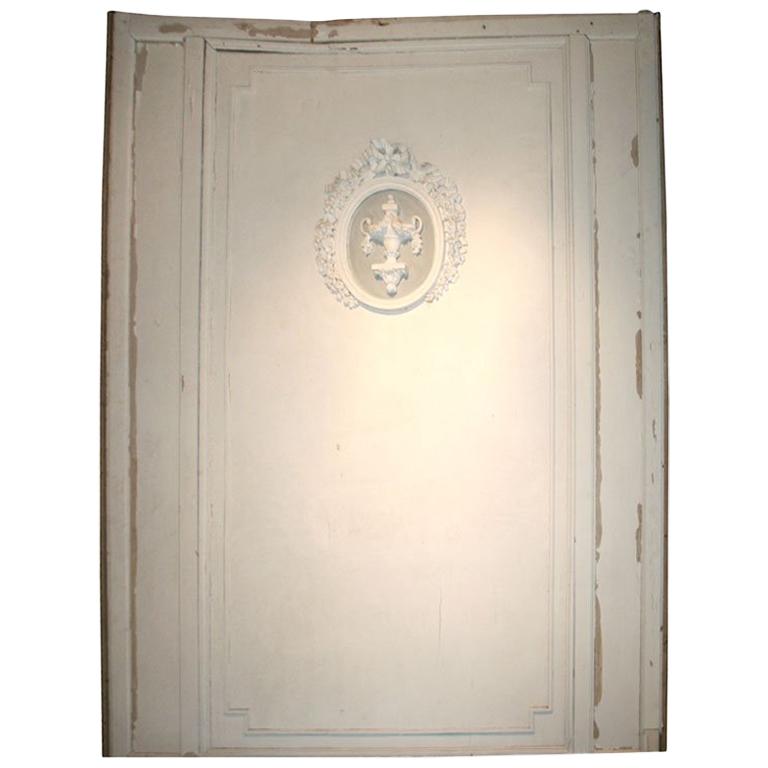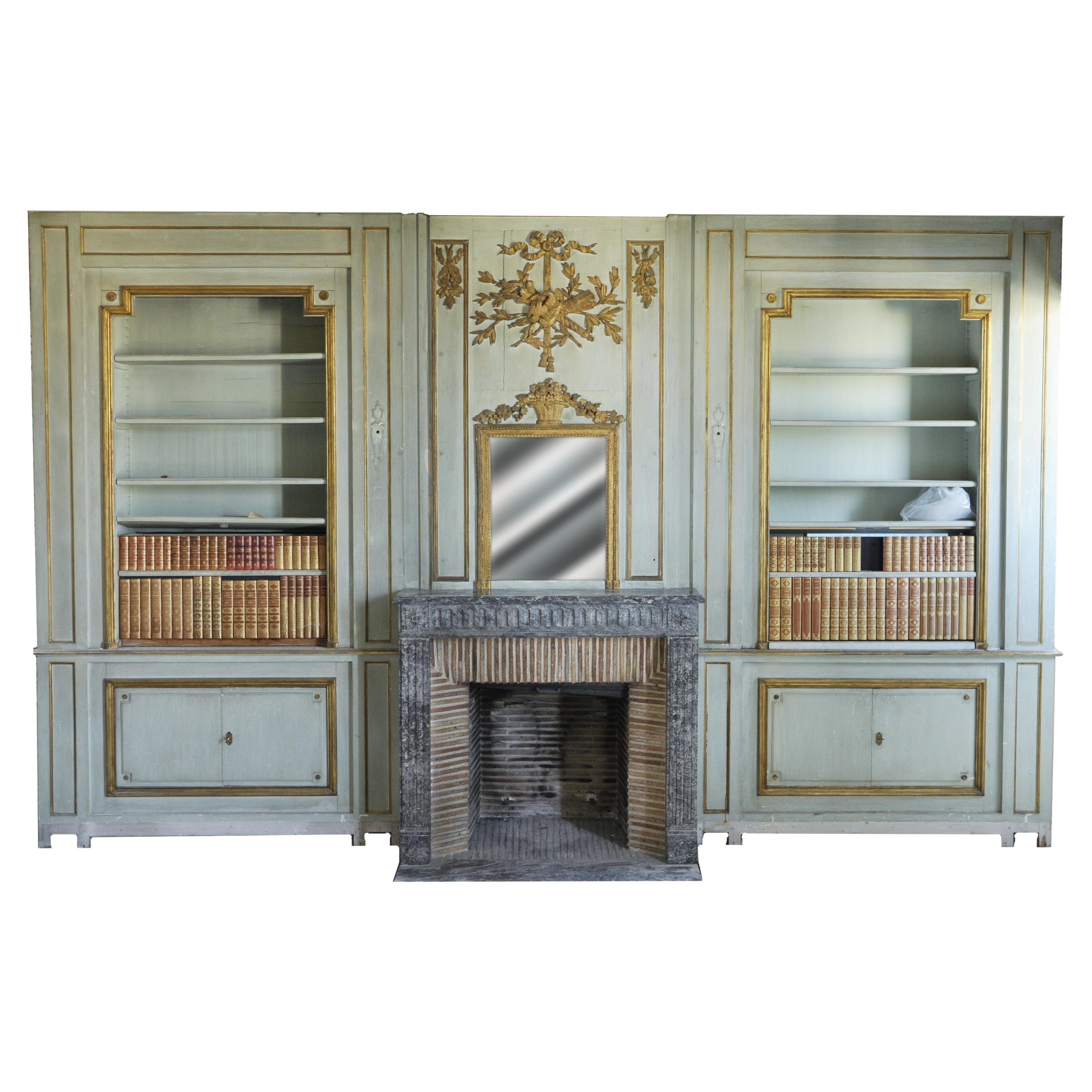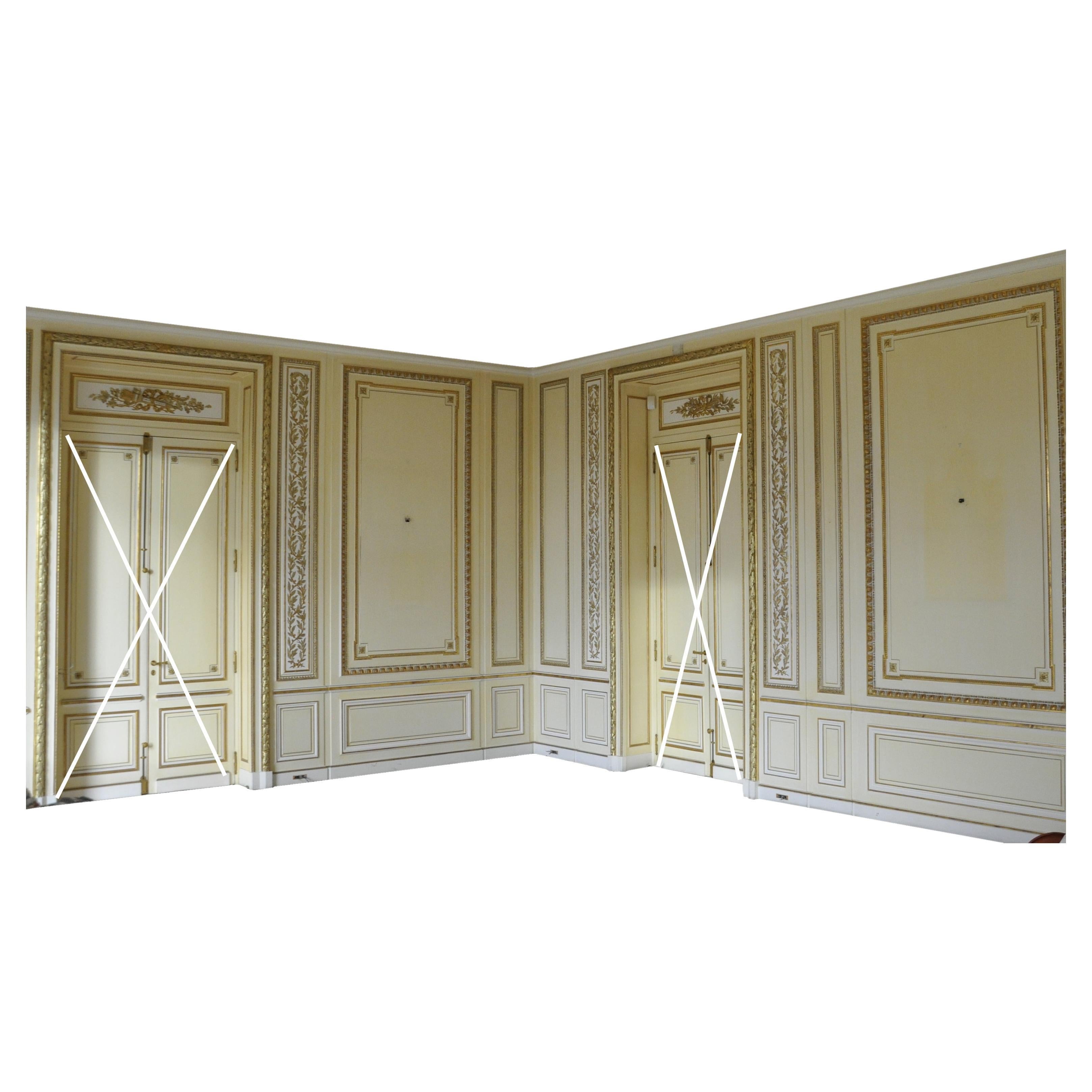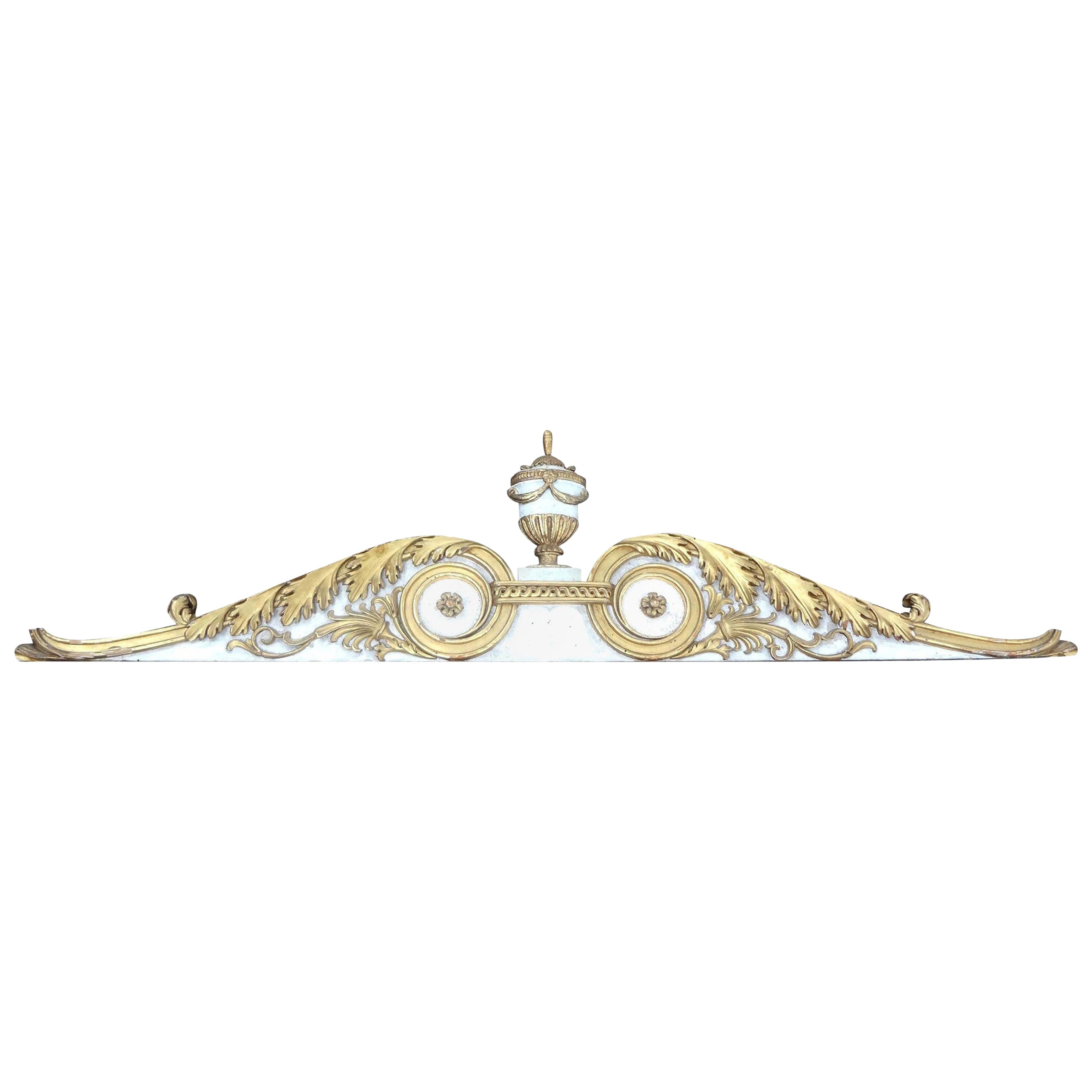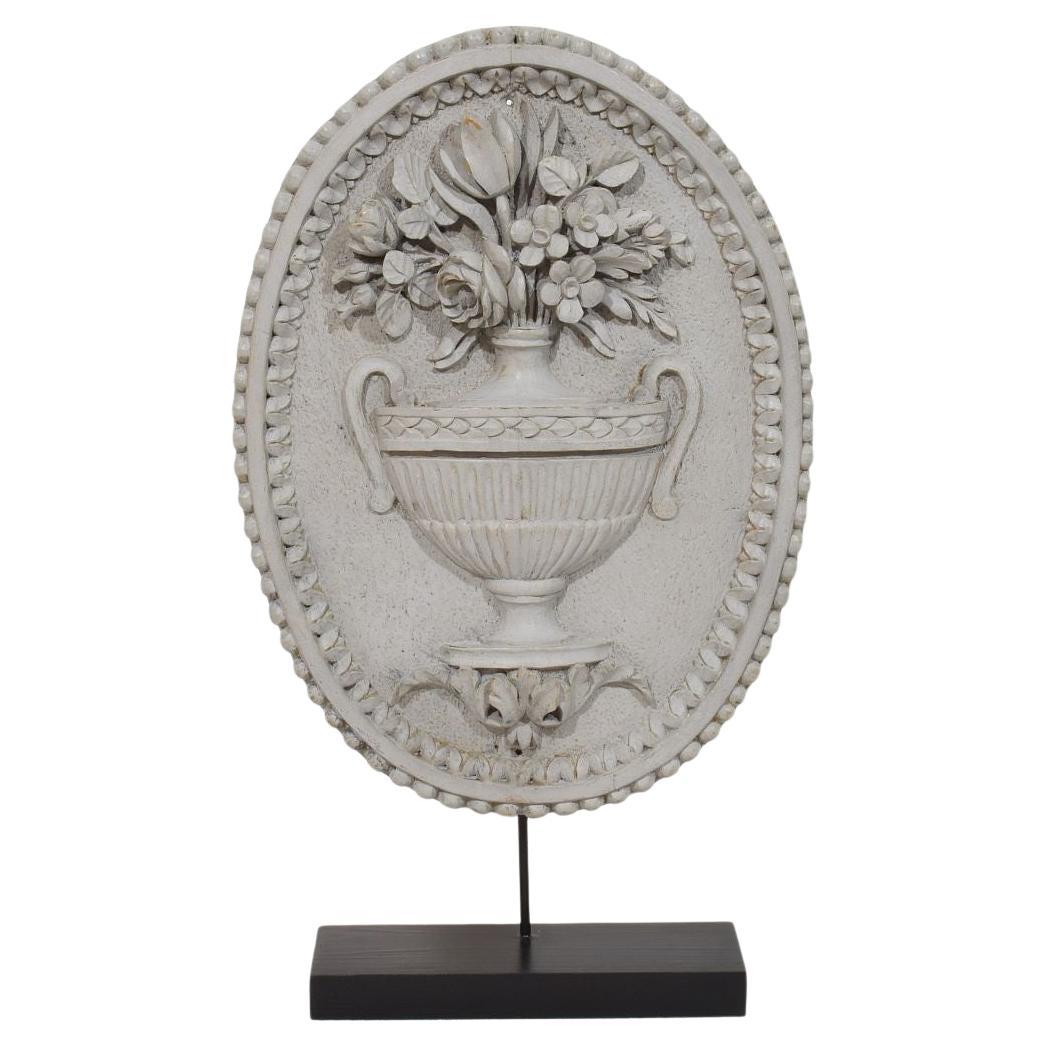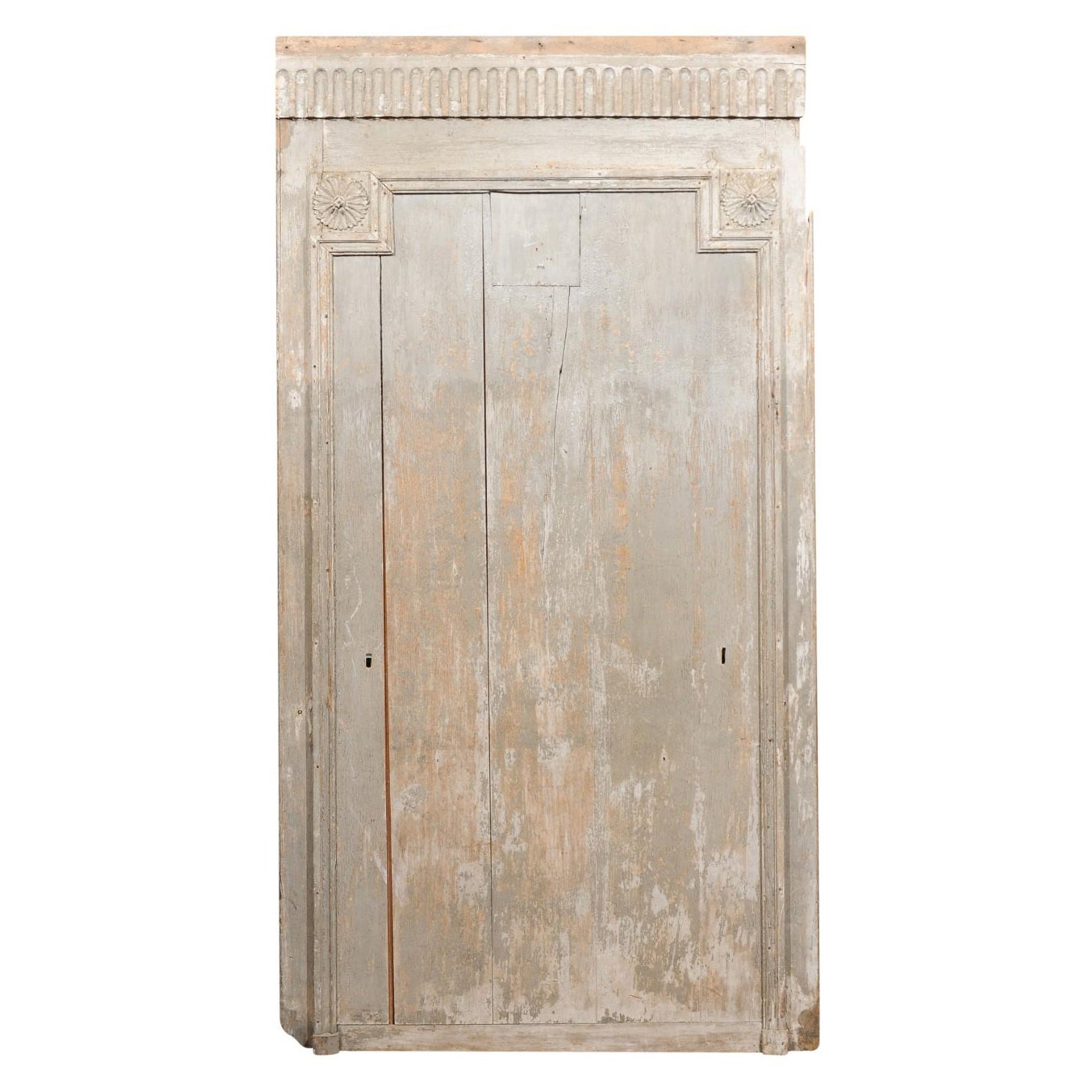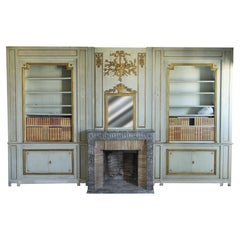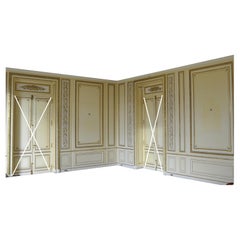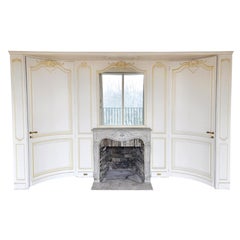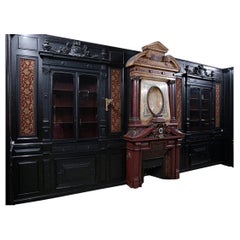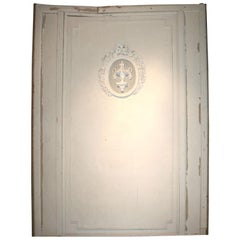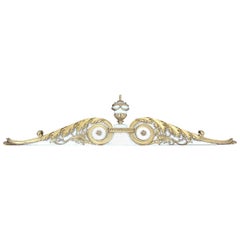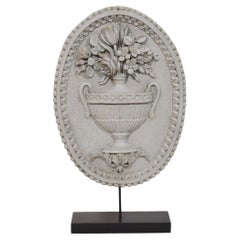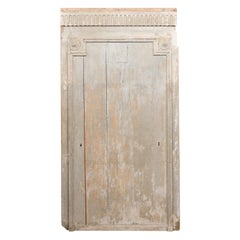Items Similar to René Gaillard (architect), Aimé Octobre (sculptor), Regency-Style Painted
Want more images or videos?
Request additional images or videos from the seller
1 of 18
René Gaillard (architect), Aimé Octobre (sculptor), Regency-Style Painted
$625,527.02
£459,017.36
€520,000
CA$850,389.60
A$952,545.67
CHF 495,217.86
MX$11,762,022.30
NOK 6,308,685.85
SEK 5,963,880.96
DKK 3,958,134.83
Shipping
Retrieving quote...The 1stDibs Promise:
Authenticity Guarantee,
Money-Back Guarantee,
24-Hour Cancellation
About the Item
This extraordinary Régence-style woodwork was designed by René Gaillard and Aimé Octobre, and is dated 1919. It comes from a room that would have measured around 52 m², based on measurements given by the cornice elements.
The woodwork includes:
- A set of wainscot elements
- 14 pilasters (with or without capitals)
- 1 single door with pass-through
- 1 double door
- 2 overdoors
- 5 openings (with a sculpted low-relief reduction)
- 3 frames (2 of which are incomplete)
- 2 signed sculpted panels (one with the artists’ full names, the other with their initials)
- 1 gilded sculpted pediment + 1 pediment in detached pieces
- 1 molded cornice
- Plinth and cornice elements
- Molding
- 2 sculpted oak leaf elements
The woodwork was designed by architect René Gaillard and sculpted by Aimé Octobre.
René Gaillard (1872-1951) was a pupil and collaborator of his father Ferdinand, also an architect. Upon graduating from the École des Beaux-Arts in Paris in 1904, he succeeded his father. His achievements include the Peruvian pavilion at the 1900 Paris Exposition, for which he was awarded a silver medal, and the elegant façade of 14 Boulevard de Courcelles in the 17th arrondissement of Paris, whose windows are adorned with sculpted cherubs.
Aimé Octobre (1868-1943) studied at the École des Beaux-Arts under Jules Cavelier, then Jules Coutan. He won the Premier Grand Prix de Rome in 1893 and received several medals at the Salons of 1897, 1899, and 1931, as well as a silver medal at the 1900 Paris Exposition. He was named a Knight of the Legion of Honor in 1906 and promoted to Officer in 1925.
The entire set, with its exceptional quality of sculpture and execution, exemplifies the Régence style, which flourished between roughly 1715 and 1723. It represents a transitional period between the art of Louis XIV’s reign, then considered rigid and cold but already relaxing from 1700, and Louis XV’s reign, which saw the rise of Rococo art. Classic Louis XIV motifs (ovolo friezes, masks, wreaths, militaria…) alternate with softened curved elements, especially in the passageway details, such as the acanthus-adorned post frieze. This woodwork, crafted by exceptional artists, is extremely decorative and promises beautiful harmony once reassembled.
Below the wainscot elements, the woodwork walls are punctuated by pilasters with gilded sculptural ornamentation. Their base is topped with a laurel leaf torus and a ova frieze; the flutes are adorned with bundles ending in pendant flowers, echoed at the upper part. The pilasters are crowned with composite capitals, or rather in the French style, imitating those of the Hall of Mirrors at Versailles, topped with an Apollo head, a motif almost identically reproduced here.
The single door features a camouflaged opening that could serve as a pass-through. It is decorated with an ova frieze at the bottom, then with a molding bordered by water leaf and pearl friezes, and finally with a frame decorated with acanthus leaves and pearls. The plate accentuating the lock is a high, openwork cartouche featuring leaf motifs in the center and Greek waves along the border. The reverse of the door is much simpler, indicating it opened to the service areas on this side.
The double door is richly decorated on both sides. On one face, the doors are simply molded outwardly, adorned with bundles accented by an acanthus leaf in the corners. In the center, a disc displays acanthus leaves, interlacing, and a flower in a radiating motif. The handle is again enhanced by two openwork plates with a cross-hatched floral element, even covering the joint between the doors with a metal interlacing for greater harmony. On the other side, the same ornamental motifs are repeated for the frame; however, the central cartouche includes an additional vegetal element, while the upper frame contains delicate sculpted floral and vegetal ornaments at the top and bottom. The joint between the doors is this time fully concealed by a laurel leaf torus.
The two overdoors complement the doors’ decoration. Each is framed by two scrolls. One includes an inner panel bordered by a pearl frieze, within which two different blooming flowers alternate amid interlacing; the spandrels are also decorated with floral motifs. A modillion frieze crowns both pieces of woodwork.
Beyond the doors, the woodwork includes five distinct openings. One resembles a mirror: it fits within a rectangular space but has rounded corners, topped with leafy spandrels. Another is similarly shaped but less decorated. A third, more simply molded, forms an arched frame with another sculpted woodwork element adapting to the arc’s shape: a laurel leaf torus on the lower part, a bundle frieze with the same shape as a frame, interrupted only by a leafy motif supporting a flower-filled cup and an acanthus leaf palmette. A fourth resembles the previous one, but the arch’s interior is simply molded.
The woodwork also includes three framed pieces with gilded ovolo friezes.
It also features two sculpted panels of trophies: the first panel, signed with the full names of the artists, is adorned with three successive trophies. The first intertwines an oboe and a distaff behind a basket of roses, pecked by two doves; the second includes a quiver and torch entwined with roses, evoking the flame of love; the third is more pastoral: again an oboe, a shepherd’s staff, a sickle, a straw hat, and a cornucopia complete a sheaf of wheat.
The second panel presents more martial trophies: the first includes a bow with lion-head ends, arrows accompanied by a quiver, and a laurel crown, the victor’s insignia in ancient Rome; the second displays an eagle-shaped insignia with the inscription “SPQR”, another nod to Roman times, with a feather-plumed helmet sculpted with a gorgon head in bas-relief and a round shield surrounded by oak leaves; the third trophy combines various swords, an axe, and a flail.
A sculpted pediment enriches the woodwork’s decoration. It echoes the martial theme of this second sculpted panel: at its center, an imposing plumed helmet rests on a quiver filled with arrows, a sword, a carved leather piece bearing the inscription “SPQR,” bundles of fasces, and a ram’s head trophy, all set on a bed of oak leaves and flags.
The woodwork’s cornice is truly exceptional. Executed to an extraordinary standard, it fits perfectly within the Régence style of the woodwork. Its lower section features a rosary frieze, followed by an inner frame with two friezes of posts adorned with acanthus leaves, facing a palmette, and finally an ovolo frieze transitioning to the overhanging elements. Coffered sections alternate with ornamental scrolls; some, vertical, are larger and hold a mask reminiscent of those on the pilaster capitals, while the others are simple horizontal scrolls decorated with acanthus leaves. The alternation of large and small scrolls varies depending on the location.
The woodwork also includes numerous sculpted elements, plinths, and cornices, molding, etc.
- Creator:Rene Gaillard (Artist)
- Dimensions:Height: 129.14 in (328 cm)Width: 298.04 in (757 cm)Depth: 298.04 in (757 cm)
- Style:Regency (In the Style Of)
- Materials and Techniques:
- Place of Origin:
- Period:1910-1919
- Date of Manufacture:1919
- Condition:Wear consistent with age and use.
- Seller Location:SAINT-OUEN-SUR-SEINE, FR
- Reference Number:Seller: 149271stDibs: LU7662242391782
About the Seller
No Reviews Yet
Recognized Seller
These prestigious sellers are industry leaders and represent the highest echelon for item quality and design.
1stDibs seller since 2022
Typical response time: 8 hours
- ShippingRetrieving quote...Shipping from: Revin, France
- Return Policy
Authenticity Guarantee
In the unlikely event there’s an issue with an item’s authenticity, contact us within 1 year for a full refund. DetailsMoney-Back Guarantee
If your item is not as described, is damaged in transit, or does not arrive, contact us within 7 days for a full refund. Details24-Hour Cancellation
You have a 24-hour grace period in which to reconsider your purchase, with no questions asked.Vetted Professional Sellers
Our world-class sellers must adhere to strict standards for service and quality, maintaining the integrity of our listings.Price-Match Guarantee
If you find that a seller listed the same item for a lower price elsewhere, we’ll match it.Trusted Global Delivery
Our best-in-class carrier network provides specialized shipping options worldwide, including custom delivery.More From This Seller
View AllLouis XVI Style Paneling with Louis XVI Period Mantel and Trumeau
Located in SAINT-OUEN-SUR-SEINE, FR
This Louis XVI style paneled room is composed of two shelves and cupboards with double doors made of wood painted in light green in the 20th century.
They frame a Louis XVI period mantel sculpted in Saint-Anne grey marble with a fluted decor on the header and the jambs. The mantel is accompanied by its trumeau also from the same period, made of sculpted woodn painted in the same colors as the rest of the room. The decor are risen up with gold painting such as the beautiful Love allegory recognizable thanks to the kissing birds...
Category
Vintage 1950s French Louis XVI Panelling
Materials
Wood
Louis XVI Style Woodwork, End of the 20th Century
Located in SAINT-OUEN-SUR-SEINE, FR
Cette importante boiserie de style Louis XVI à été réalisée à la fin du XXe siècle. Les panneaux de couleurs jaune clair présentent un décor en stuc à l’an...
Category
Late 20th Century French Louis XVI Panelling
Materials
Wood, Plaster
Louis XV style paneled room with 18th century stone fireplace
Located in SAINT-OUEN-SUR-SEINE, FR
This Louis XV style paneled room was made in the early 20th century. The Louis XV era stone fireplace was made in the 18th century. The woodwork may be likened to the work of Jansen....
Category
Antique 1860s French Louis XV Panelling
Materials
Stone
Louis XVI Style Panelling with Louis XVI Period Mantel and Trumeau
Located in SAINT-OUEN-SUR-SEINE, FR
Rare Napoleon III style paneled room in blackened wood (stained beech) with its fireplace in stucco in imitation of porphyry.
The fireplace, which is the centerpiece of this paneled...
Category
20th Century French Napoleon III Panelling
Materials
Bronze
Paneled Room with a Neo-Classical Decor, Louis XVI Period
Located in SAINT-OUEN-SUR-SEINE, FR
This beautiful paneled room is composed of elements from the Louis XVI period on a pine tree structure, some elements have been put on more recent frame from the 20th century beginning.
It shows a white painted paneled decor...
Category
20th Century French Louis XVI Panelling
Materials
Wood
Panneling, Set of Carved Oak Ionic Pilasters, 18th Century
Located in SAINT-OUEN-SUR-SEINE, FR
This 18th-century woodwork features a set of pilasters, more ornate than classical Ionic models. It reflects the strong taste for Ancient Greek aesthetics that prevailed during the 1...
Category
Antique 18th Century French Louis XVI Panelling
Materials
Oak
You May Also Like
Signed Maison Jansen Boiserie, France
By Maison Jansen
Located in Stamford, CT
Signed Maison Jansen boiserie panel with oval medallion decoration.
Category
Vintage 1940s French Beaux Arts Architectural Elements
Materials
Plaster, Wood
Late 18th-Early 19th Century Italian Painted and Parcel-Gilt Architectural
Located in Houston, TX
Stunning late 18th-early 19th century Italian painted and parcel carved giltwood architectural over door, architectural element or fragment. A ...
Category
Antique Late 18th Century Italian Neoclassical Architectural Elements
Materials
Wood
French 19th Century Panel In Louis XVI Style
Located in Buisson, FR
Wonderful wooden panel depicting a vase with flowers in Louis XVI style with beautiful old color.
France circa 1850. Weathered.
Measurements include the wooden base..
H:35,5cm W:21c...
Category
Antique 19th Century French Louis XVI Architectural Elements
Materials
Wood
$595 Sale Price
44% Off
Late 18th Century French Painted Architectural Panel
Located in Atlanta, GA
Late 18th century French painted architectural panel.
Category
Antique Late 18th Century French Architectural Elements
Materials
Wood
Set of 6 French Louis XV Style Gold and White Panels
Located in Queens, NY
6 French Louis XV style (19th Century) white and gold painted pilaster panels. Size variance, 1 panel: 25" wide, 5 panels: 15" wide. PRICED AS A SET
Category
Antique 19th Century French Louis XV Pedestals and Columns
Materials
Giltwood, Wood
$18,000 / set
Large Painted Louis XVI Chateau Boiserie Overdoor, Circa 1760
Located in Dallas, TX
This large painted overdoor was once part of a boiserie in a French chateau, and the upward curve of the bottom edge indicates that it was most likely placed above an arched door. Th...
Category
Antique Mid-18th Century French Louis XVI Panelling
Materials
Wood, Paint
More Ways To Browse
Greek Architecture
Painted Regency Furniture
Roman Architecture
Architectural Mold
Painted Plinth
Rococo Architecture
Regency Style Garden Furniture
Hand Painted Antique Windows
Painted Cornices
Wood Sword
Large Garden Mirrors
Wood Pilaster
Laurel Crown
Second Hand Pearls
Antique Feather Painted Furniture
Antique Wood Saw
Carved Doves
Architectural Pediment
